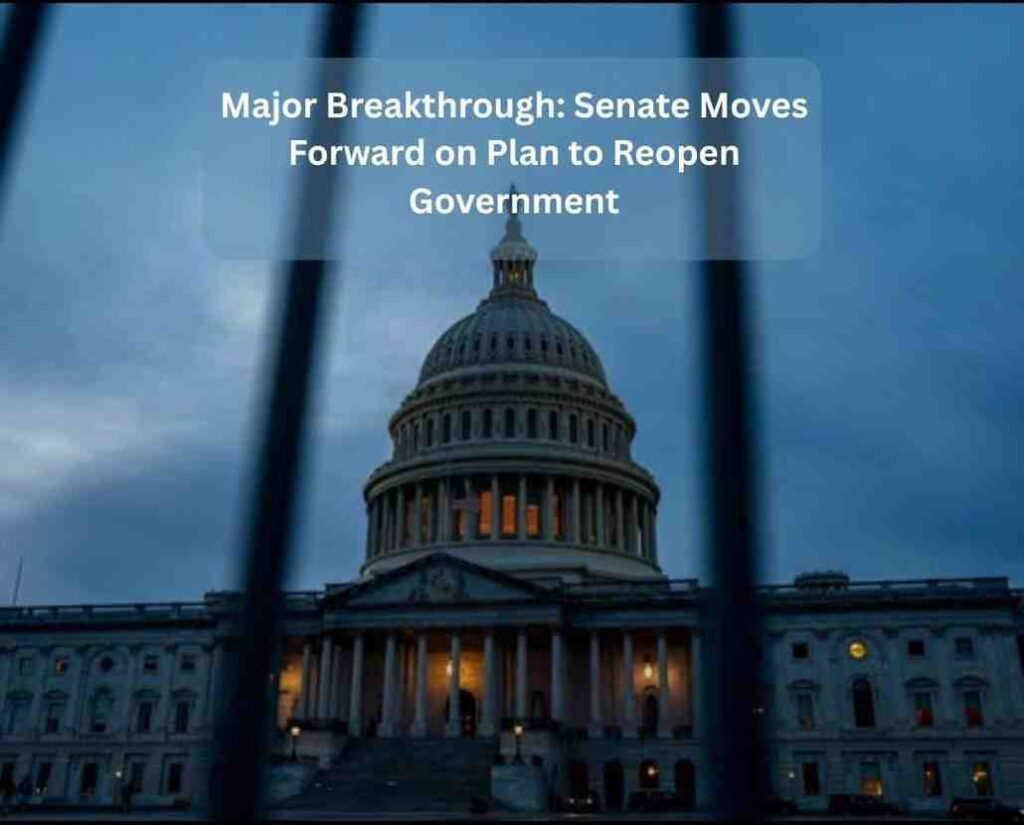U.S. Senate Moves Toward Ending Prolonged Government Shutdown: A Ray of Bipartisan Hope

After weeks of political deadlock, rising public anger, and mounting economic strain, the United States Senate has finally made a decisive move toward ending one of the longest government shutdowns in the nation’s history. Late Sunday night, senators voted 60–40 to advance a bipartisan compromise bill that could reopen government operations — marking the first major sign of progress after more than a month of stalemate.
The Late-Night Breakthrough Vote
The vote, held after days of intense behind-the-scenes negotiations, reflects a rare moment of unity in a deeply divided Congress. For weeks, lawmakers had been at odds over budget priorities and policy conditions tied to government funding. But as the shutdown stretched into its 40th day, the economic and social fallout became impossible to ignore — prompting members from both sides to come together in an effort to break the impasse.
While Sunday’s Senate vote doesn’t immediately reopen the government, it sets the stage for the next crucial step: approval by the House of Representatives. Only after the House passes the measure can it be sent to President Donald Trump for his signature — a move that would officially end the shutdown and bring federal operations back to normal.
🏛️ House Faces Pressure to Act
The spotlight now shifts to House Speaker Mike Johnson, who holds the power to bring lawmakers back into session. The House has been adjourned since September, and Johnson must now decide whether to recall members to Washington to deliberate and vote on the Senate’s proposal.
If he does so promptly — and if the House passes the bill — the government could potentially reopen within a matter of days. However, any delay or additional political maneuvering could extend the shutdown even further, deepening the frustration among federal workers and the American public.
Nationwide Consequences of the Shutdown
The ongoing shutdown has already left deep scars across the country. Hundreds of thousands of federal employees have either been furloughed or forced to work without pay. Essential services have been disrupted — from national parks and passport offices to food assistance programs and small business loan approvals.
Communities that depend on federal funding are under severe pressure. Local economies near military bases, research institutions, and government facilities have been hit hard, with small businesses reporting steep losses. Families waiting for benefits like SNAP, Medicaid reimbursements, and housing support are facing uncertainty, while federal contractors — many of whom won’t receive back pay — continue to bear the brunt of the crisis.
Economists estimate that the shutdown has cost the U.S. economy billions of dollars in lost productivity and revenue, adding urgency to the call for resolution.
A Glimmer of Bipartisanship Amid Division
Despite the bitter political climate in Washington, Sunday’s Senate vote was widely seen as a symbol of cautious optimism. Lawmakers from both parties emphasized that the decision to move forward on a compromise bill was not about victory or defeat — but about restoring basic functionality to the federal government.
“This is not a perfect bill,” said one senator after the vote, “but it’s a necessary step to stop the damage being done to our people and our country.”
Political observers say the measure could serve as a turning point, signaling that Congress may finally be ready to work across the aisle. With public patience wearing thin and polls showing widespread disapproval of the prolonged standoff, lawmakers appear to have recognized the need for urgent action.
What Comes Next
All eyes are now on Capitol Hill, where the next few days could determine whether the nation’s longest shutdown finally comes to an end. If the House is recalled and passes the Senate’s version of the bill, it will move quickly to President Trump’s desk. The President’s signature would immediately restore funding to affected agencies and allow millions of Americans to return to work.
Until then, uncertainty remains. Federal workers continue to await paychecks, agencies remain partially closed, and the public’s trust in Washington’s ability to govern is once again being tested.
Still, the Senate’s action has sparked cautious optimism — a sense that the government’s long paralysis might soon give way to compromise and functionality.
For millions of Americans affected by the shutdown, Sunday’s vote is more than just a procedural milestone; it’s a symbol of hope that their livelihoods and stability may soon be restored.
In short: After 40 days of gridlock, the U.S. Senate’s 60–40 vote represents the strongest momentum yet toward reopening the government. The next move lies with the House — and the nation is watching closely, hoping that this long chapter of uncertainty may finally be nearing its end.



